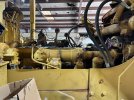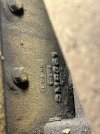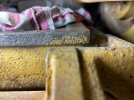631G
Senior Member
I cannot find the clearance tolerance for the flatness of the block to check with a straight edge and feeler gauges. Does anyone know what we need to have before reinstalling the heads so we know if we're going to need to deck the block?
I've looked and looked for the engine serial number but cannot locate it. I guess it's been painted over or I am not looking in the right places.
The machine series number is 66A7860
I've looked and looked for the engine serial number but cannot locate it. I guess it's been painted over or I am not looking in the right places.
The machine series number is 66A7860




